A huge thank you to the Kingpin of List Strategy, Ryan Reisert, who’s writings, teachings and mentorship directly inspired this article, and Shannon Needham, without whom the graphical color of this article (and my life) would be lacking.
Intro
In the last few articles, we've spent a lot of time on questions that sit higher up the abstraction pyramid for effective telephone prospecting. Phone deliverability, reachability vs. receptivity and the distribution of call outcomes are all moot points if you cannot answer the fundamental question that we will discuss today.
Although it probably shouldn't, I'm astounded by the number of organizations that dedicate millions, if not hundreds of millions of dollars to their sales organizations that fail to ask this question, and indirectly place the onus to answer it on their individual contributors. It's no surprise that these same organizations will see the majority of their reps fail to hit quota, blame and fire said-reps, then bring in new ones to repeat the insane cycle ad nauseum (with a new VP installed every 12 months for some variety to satisfy investors/the board)
Alas, if you're reading this, you're an operator, which means you get the job done no matter what. Jack Bauer didn't care how tough the mission was, who the head of CTU was, or even who the President of the United States was, and as a GTM Operator, you've committed your livelihood and your self-respect to accomplishing the mission. Let's equip you with the tools you need to make that happen.
As an individual contributor, reading this article and putting into action the simple steps I detail below and absolutely nothing else will pay for your subscription 10x over. Your leadership will scratch their head as you fly up the leaderboard and generate more output than the rest of your team put together.
It's that powerful.
If you're in leadership, rev ops, sales enablement or any other overwatch function, systematizing these steps and training your reps on executing them will be a powerful fulcrum that lifts productivity across your entire sales organization- "why didn't we do this years ago?" They'll ask as you shrug and minimize your window with The GTM Operators Club open.
Let's dive in.
The question is a simple one:
"Where is my next best sales conversation right now?”
Lest this seem like an obvious question, consider the work flow of an "average" SDR
At the beginning of the week, add X number of "net new" prospects to a sequence - with zero attention paid to data accuracy, channel segmentation or prospect communication preferences
On a daily basis, engage with any "interested replies" or mindlessly complete tasks as dictated by the sequencer - because that's "what the sequence says to do"
Repeat ad nauseum, moving prospects that "complete" the sequence into additional sequences, repeating the entire Kafka-esque nightmare each day before clocking out for the weekend at 5 PM sharp because "Thank God It's Friday Haha!".
This soul sucking, mindless widgetization of prospecting has stripped sales reps of accountability, responsibility and dignity, replacing authentic human to human connection with a soul-sucking Dilbertian process that drives a growing wedge between buyers and sellers. We are at a dire inflection point: If sequencing tools are the match and data vendors the puddle of kerosene, then AI is the pile of dynamite, and as we speak flames are racing toward the big kaboom.
As operators, it is critical that we take responsibility and act right now before the conflagration takes us and all we hold dear with it.
A Better Way- The Three Categories of Contact Data
Let's start with the end in mind, then work our way backwards on how to get there:
At any given moment, you should be able to open up your CRM/Dialer/Contact Tool of Choice and immediately launch into outreach to prospects, prioritized in order from most likely to least likely to enter a live conversation. Far too many sales reps simply approach their lists in a one-size-fits-all approach, which makes no sense given that there's a ton of filterable criteria by which you can stack the deck in your favor to improve the likelihood of engaging in live-time conversation, which is ultimately the lifeblood of any revenue generation program.
This prioritization is fractal in nature across channels, and before we lay out the waterfall we have to cover some definitions together:
Reachable Data:
This is contact information that you've established a prospect is RESPONSIVE to.
Reachable Data should ALWAYS be prioritized. Hopefully that speaks for itself, but to explicate further: If you've determined that somebody responds in a certain channel, you want to attempt these records first and foremost. There's some further sub-divisions of this data that you'll prioritize accordingly, but we'll cover that in due course.
Workable Data:
This is contact information that you've verified belongs to the prospect you want to reach, but in which you have yet to receive a response.
Workable data is where SDR productivity goes to die - It's "workable" in the same way as eating at McDonalds on a long road trip. Is it better than starvation or death? I guess. Is it optimal and will you feel good doing it? Probably not.
Workable data is right in the sweet spot of being valid enough to justify working, but not so valid as to be optimal. As such, this is data you prioritize AFTER such time that you exhaust all your reachable data.
Bad Data:
This is contact information that explicitly results in a bounce back or you cannot verify belongs to your prospect.
Bad data is critical to identify for the reason that simply avoiding it gives you back a huge percentage of your efforts that would otherwise be completely wasted. Consider the following distribution (note this is for phone data):
Simply by identifying my bad data, I'm able to identify the 50% of efforts I would undertake on contact information with either a zero or very low probability of yielding any type of outcomes. Let's unpack the astounding implications of this information:
Absent the ability to avoid bad data, an SDR that makes 50 dials a day, or 250 dials a week, will spend 2.5 work days making attempts on contact information that is unlikely to ever yield any outcomes. YIKES.
NOTE: This particular data set has been enriched across 15 different data sources. The "Needs Attention" rate for most singular data sources is somewhere around 20% - meaning absent enrichment you're looking at more like 66%, or 2/3 of your outreach efforts being totally wasted. Is it any wonder that teams are struggling to hit quota?
Now that we have our definitions in place, let's work through the list hierarchy we will set up so that you can dominate your market:
Let's take a look at the list hierarchy and then unpack it together:
You'll notice that the list is an endlessly recursive loop across two dimensions:
Probability that you'll have a (positive) conversation with your prospect
You'll note this is a binomial expression, which is to say you're optimizing around 2 parts.
(1) A conversation, period, but as a subset of that hopefully (2) a positive conversation.
You'll want to prioritize people who were receptive ahead of people who weren't, but assuming the follow up date threshold is met you're going to talk to both
Working from your most productive channel to your least
As a subset of working down from most to least likely to have a (positive) conversation - you're going to work from your most productive channel to your least. We are partial to the phone here at The GTM Operators Club but recognize that some of you are killers with email, social, etc. We're all about embracing your individual unique genius and letting it shine
It's worth noting that "Your Best Channel" is the one that you have QUANTIFIED to be your best performing channel, which is different from "your personal favorite channel" or "the outreach method you'd really like to work on this week" - this is about achieving the best possible results per unit time.
Step 1 - Start With Reachable Data
Unlike asset markets, where "past performance is not indicative of future results", the people you've spoken to before are the people who are most likely to speak to you again.
Accordingly, the first priority you have each and every day you do outreach should be to contact the prospects whom you've already spoken with - assuming they're due for a follow up.
The Power of Positive Compounding
Per Ryan Reisert, follow ups are 3-5x more likely to pick up relative to your cold list, and convert at a 2-3x rate. Let's revisit the buyer's pyramid to see why this makes sense:
At any discrete point in time, there's a strong likelihood that any given prospect you speak to will not be in the buying window for your solution - after all, only 10% of the market is in the buying window. On an infinite time horizon, however, that likelihood flips, and at some point - typically within the next 3 years (the average solution lifecycle, per Chris Beall of ConnectAndSell) - your prospect will be evaluating solutions just like yours.
The catch? There's no way of knowing when any one prospect will be in the buying window, which means it's your responsibility to keep track of follow up dates and circle back each quarter.
The Tipping Point
Some interesting implications pop out from this: The first puts numbers behind what we all intuitively know - the toughest time in any sales seat is going to be your first couple of quarters. At this point the majority of your conversations will be cold, which as we discussed previously will be your lowest converting audience. As you go about having your cold conversations and tagging prospects for future follow up, however, you'll reach a tipping point where the majority of the conversations you have will be with people you've already spoken to.
The answer is simple, if not easy: Pick a role you want to stay in for at least a few years and let the power of positive compounding do its thing. While that's happening, build your subject matter expertise so that each time you return to a prospect you do so with more insight about what's happening in their world. Doing the work of educating yourself raises the ceiling on your ability to serve, and also increase the probability of unlocking those next steps.
Step 2 - Workable Data
At this point we're firmly into diminishing returns.
Consider this analysis I ran on some of my own calling data - I'm connecting with P1s (my reachable data) 5x more frequently than P2's (my workable data).
Put another way, I'm making a third of the dials to have almost twice as many conversations.
Accordingly, this is your "sifting for gold" data set. You'll convert some prospects here into meetings and activated leads, but for the most part you've accepted that a great majority of your time here will be completely wasted. A great outcome for this bucket is connecting with prospects and moving them up into your reachable list. If you have a small TAM this may make sense, but make no mistake about it: the elbow grease required here will be considerable.
Alternatively, you can get TitanX to "Titan Score" your data, which means to make 5 attempts on a contact record. 5 attempts will get you about 80% of your reachable data identified, surfacing the 20-30% of phone picker uppers within any population.
If you're a full cycle AE and have BDR support, this is the bucket you want them to own. With reachable data you can get a lot done in a very short period of time, which is critical when you're running around between demos, putting together proposals and communicating with current clients. Ideally your reachable data set is large enough that your entire team can cover it in a full day of prospecting, with some time for more junior reps to also hit workable data.
Step 3 - Bad Data

It's almost a misnomer to call this bucket part of the list strategy. In the same way that caution tape is a wildly different form of labeling than a street sign, you're segmenting out this bucket with one goal: Avoid.
If you've got research analysts on your team, this is the bucket to hand them: Perhaps there's additional contact information you have yet to uncover, or an additional channel you can attempt the prospect on.
If your TAM is absolutely tiny and you have to make the most out of every single record you have, this is the bucket you'll put your detective hat on for. Websites like fastpeoplesearch.com are great resources here, and if you want to really go down the rabbit hole osintframework.com has a litany of tools you can play with.
One note of guidance here - do all this work OUTSIDE of your prospecting hours. It's a huge time suck with a low probability of yielding any useful outcomes. Again, we're deep into diminishing returns territory here.
Conclusion
GTM Operators are too valuable to waste their own time, too responsible in their duty to waste personal or organizational resources, and too committed to their goal of authentic human to human connection to engage in the thoughtless, drone-like behavior so many sales reps fall into when they fail to segment their lists logically.
Follow the above guidelines and watch as you have more conversations in a single day than the rest of your team does in a week. Incredulous, they will ask you what you're doing differently.
I imagine you thought I was going to ask you to plug the blog here...on the contrary - repeat after me: "Just lucky, I guess." Wink, smile and nod. Anybody who was about that action would already be here. Let's keep this our little secret for your advancement.
If you need help setting any of this up, holler at me. Otherwise I'll see you next week.
Charles






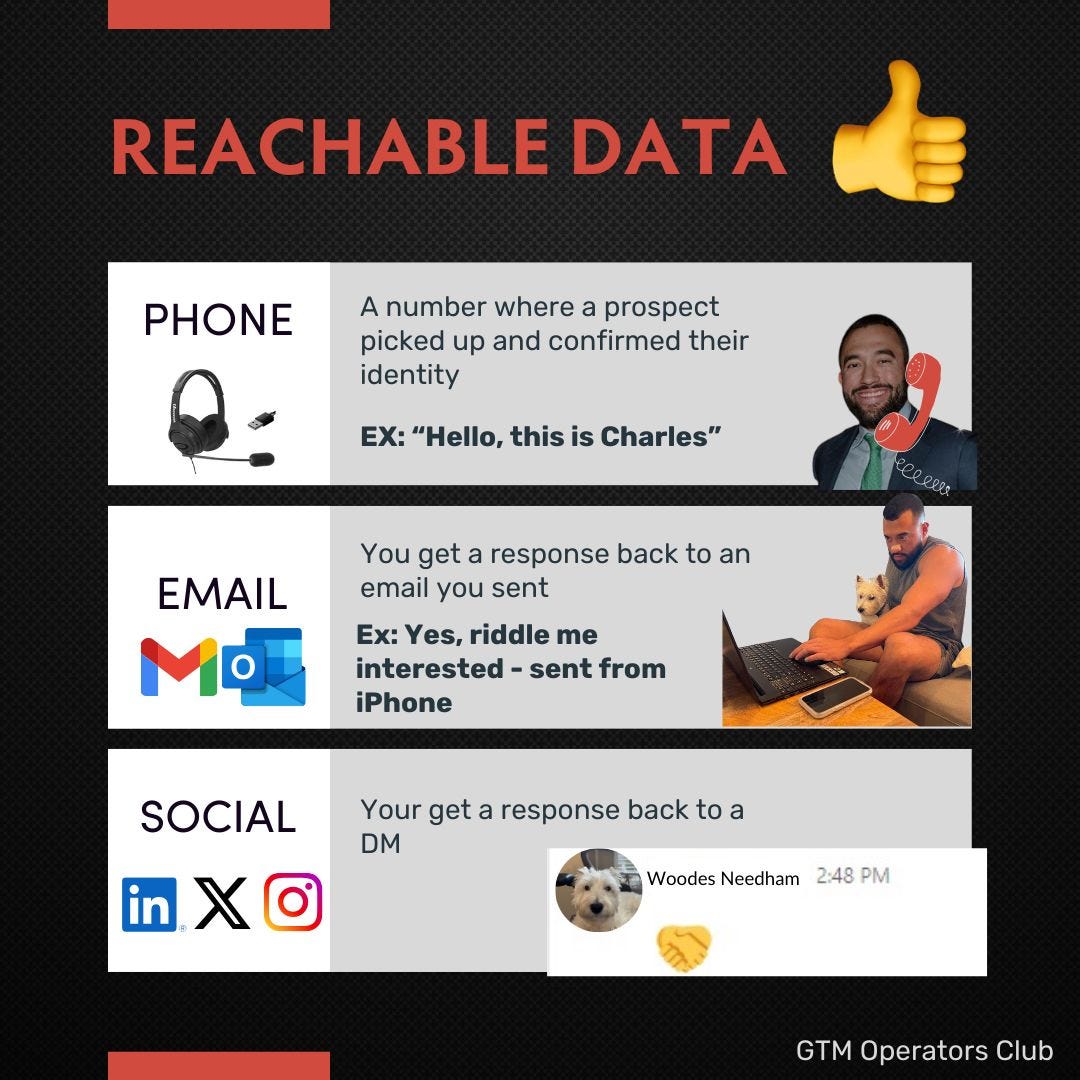
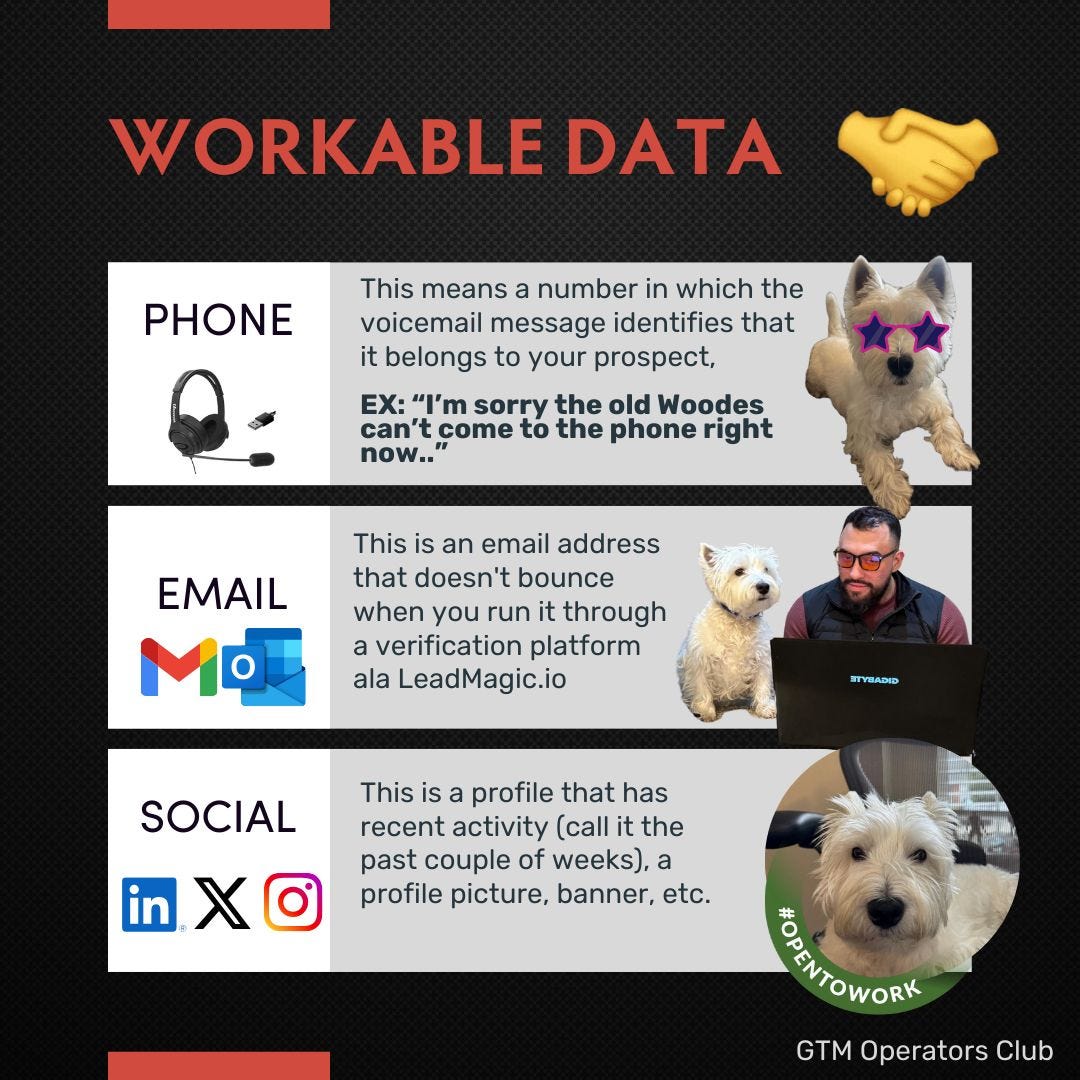

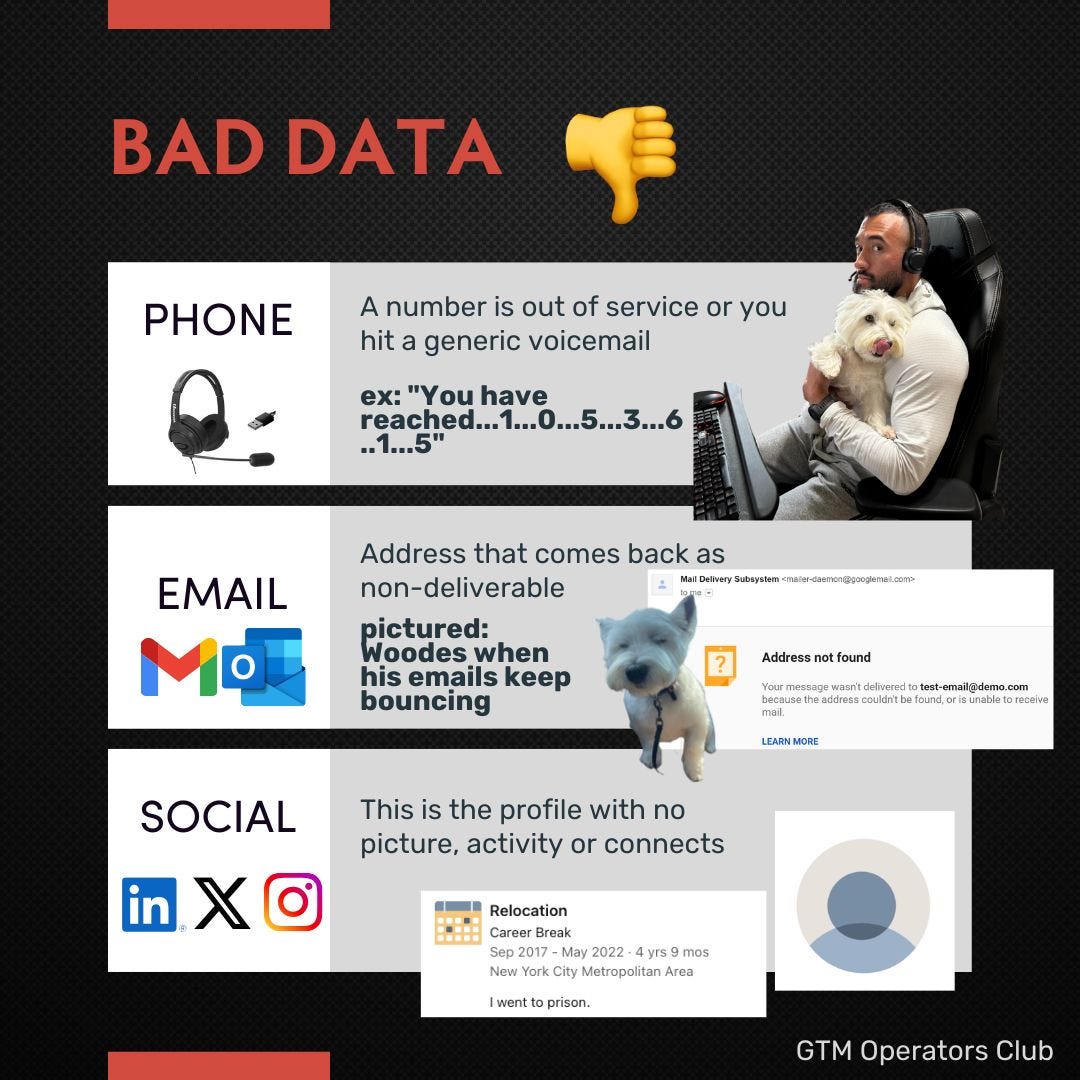

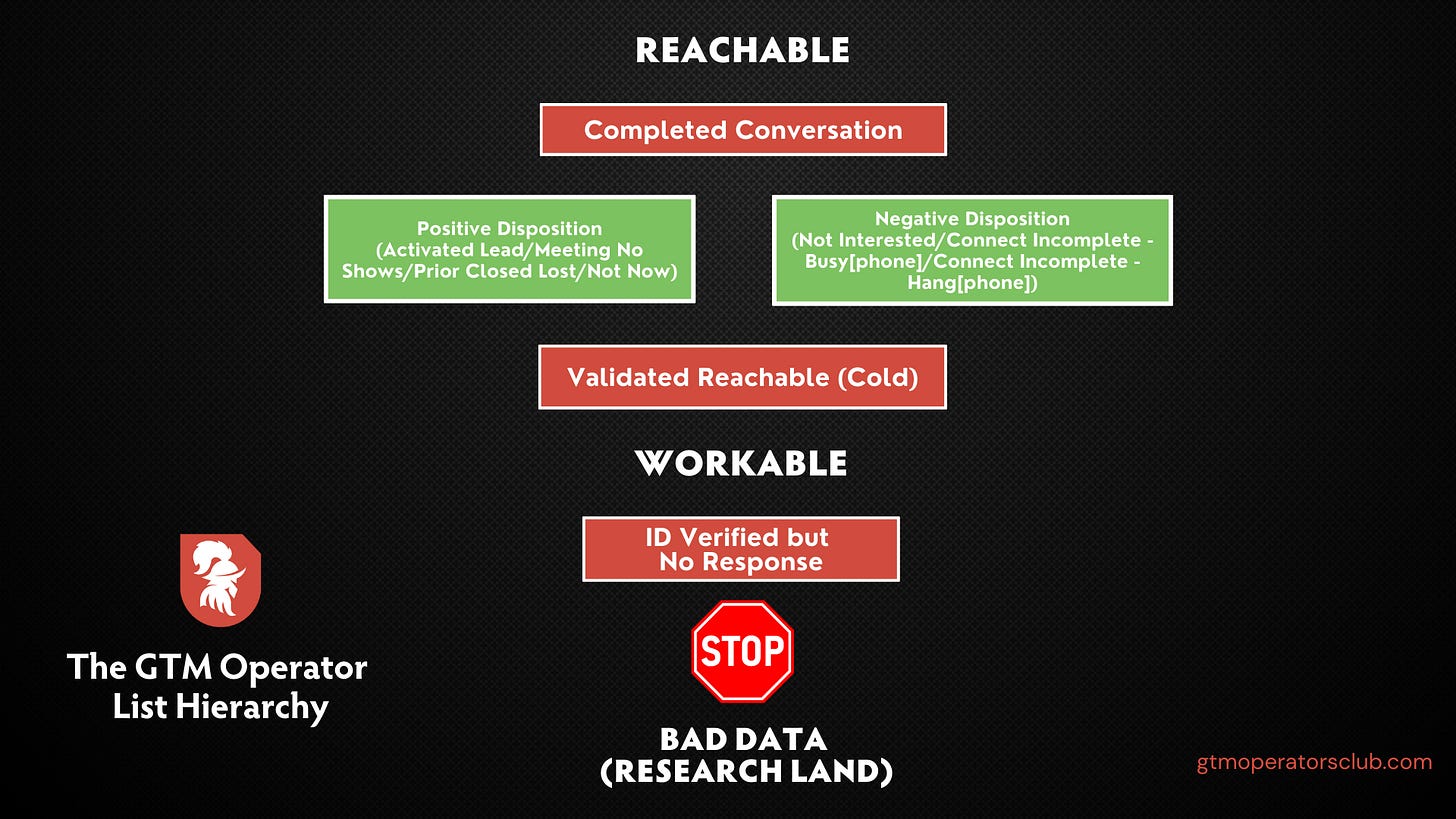
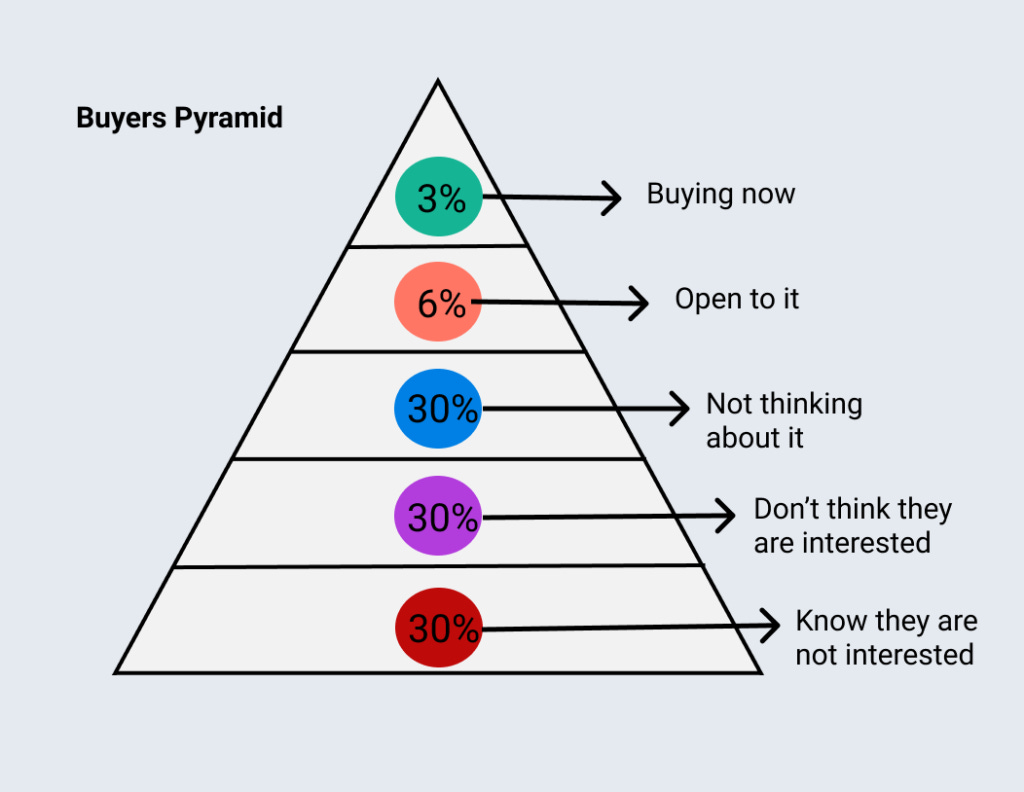


My problem is I have a limited TAM so I feel I have to call everyone